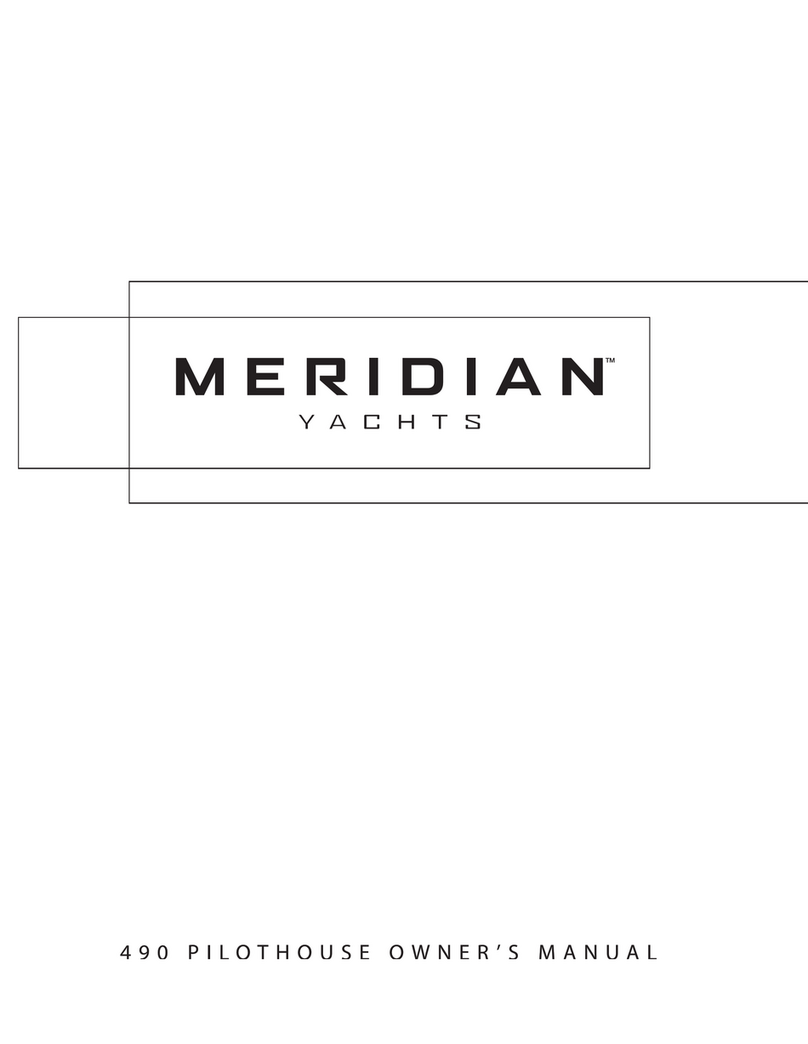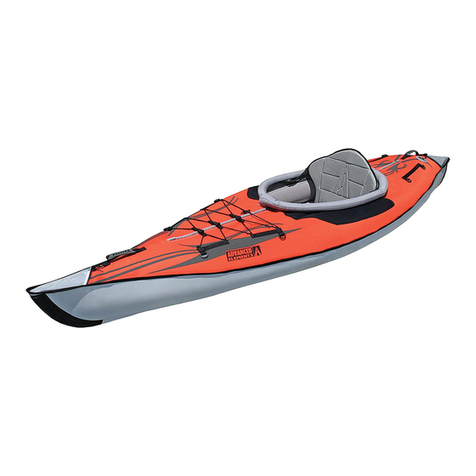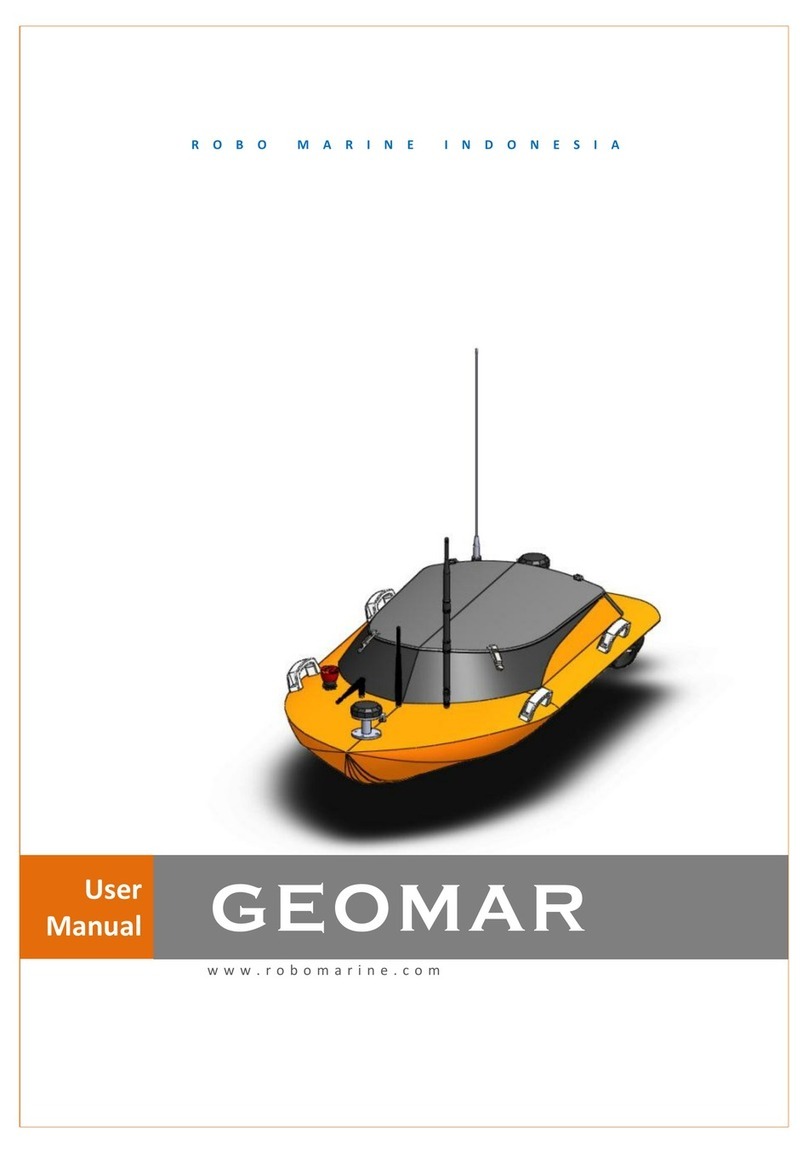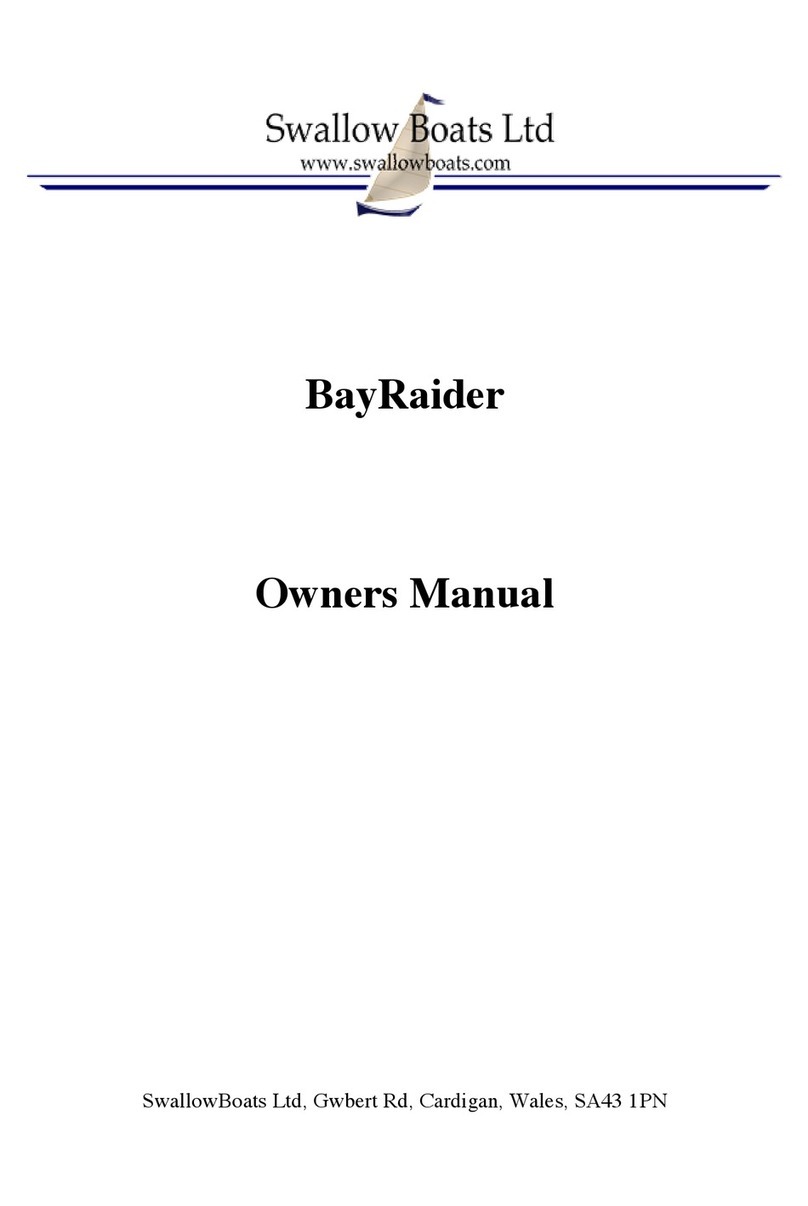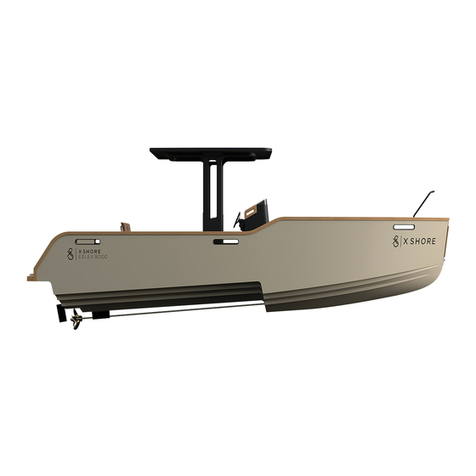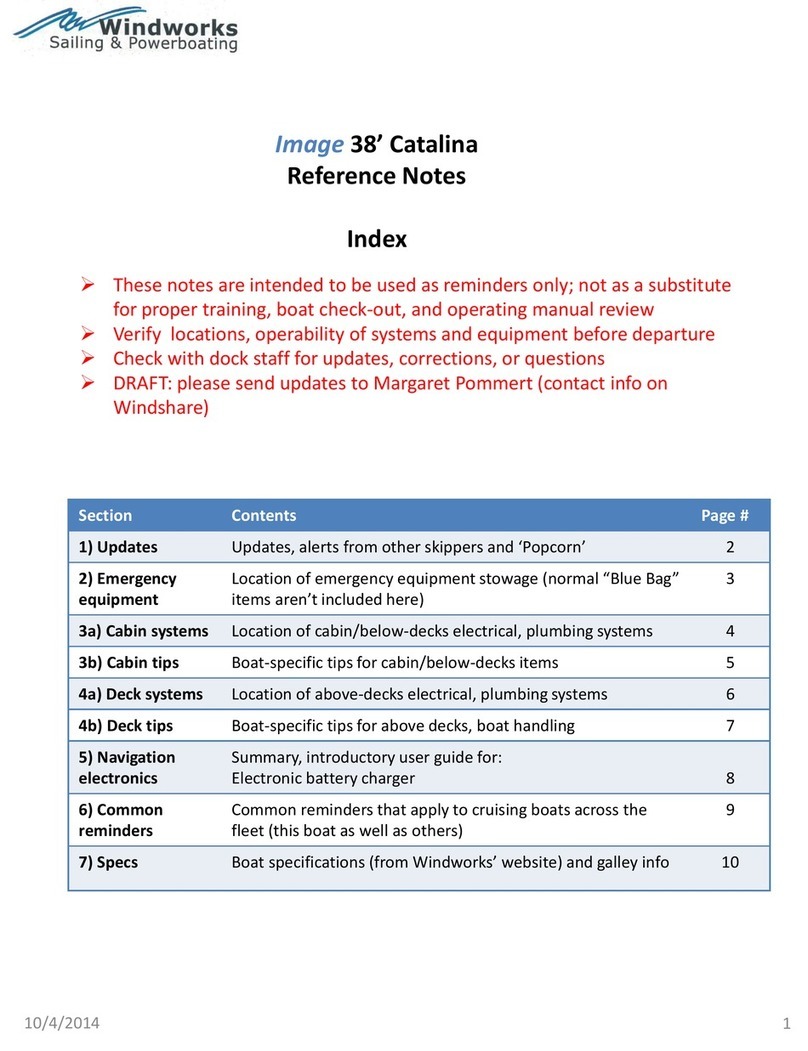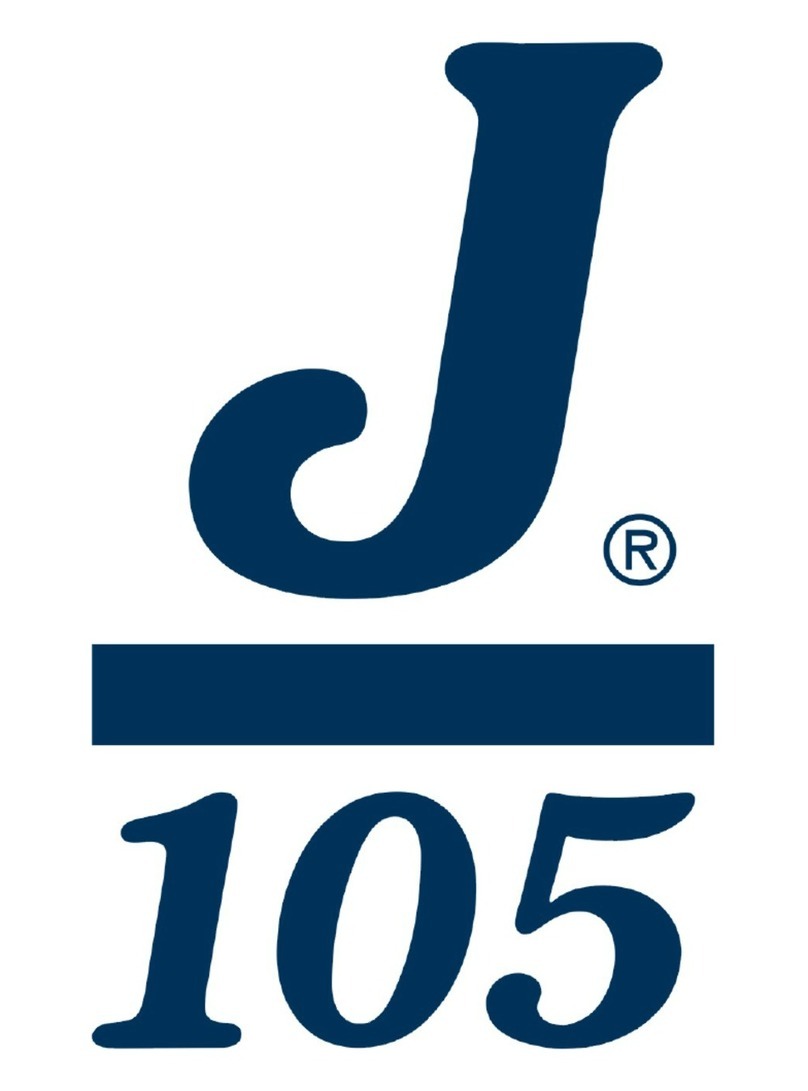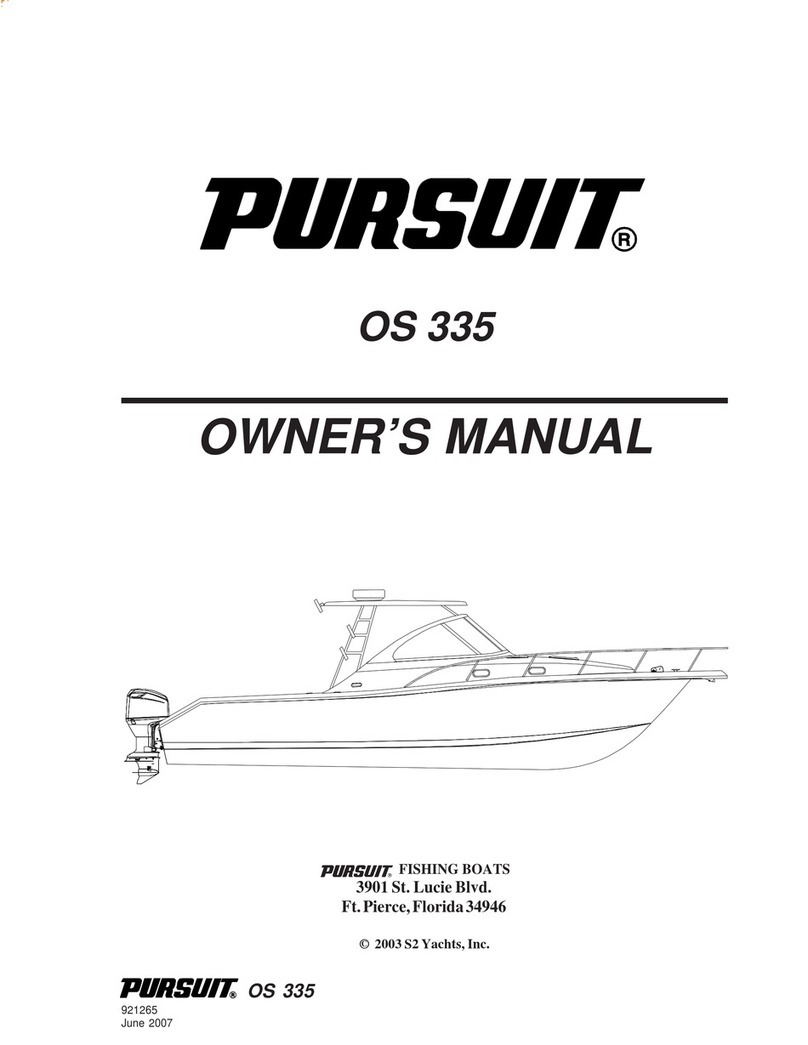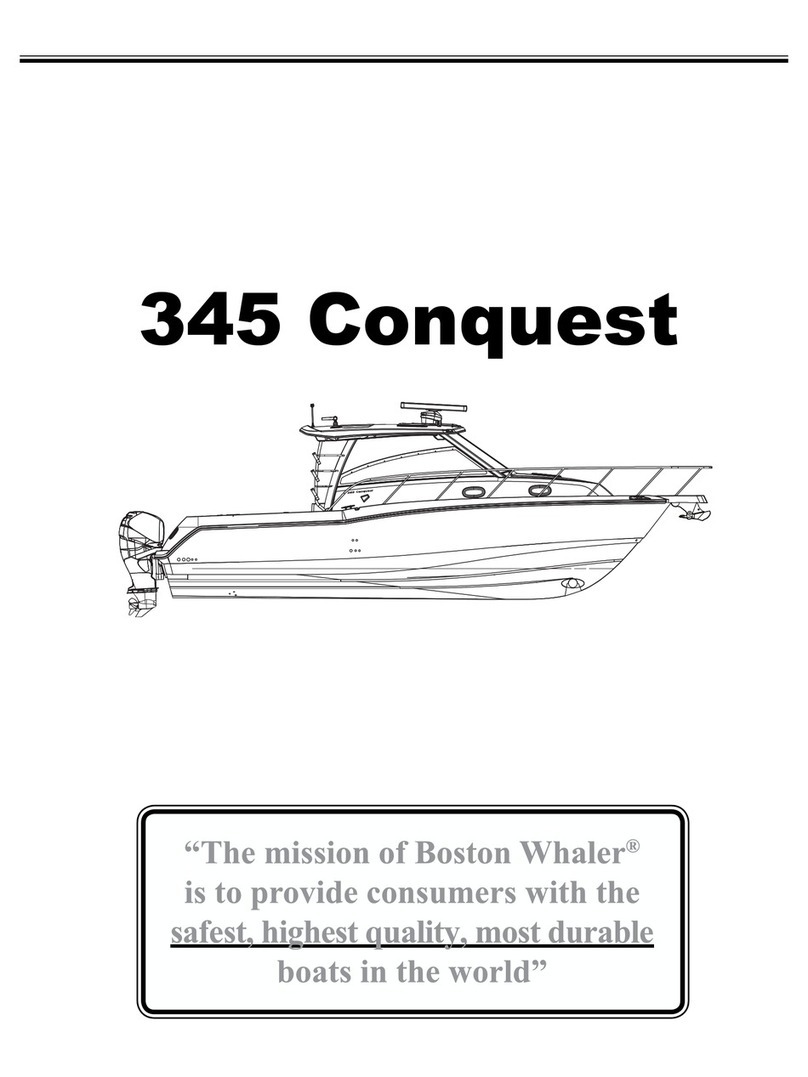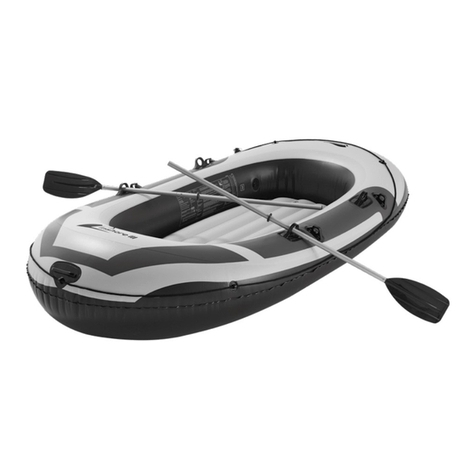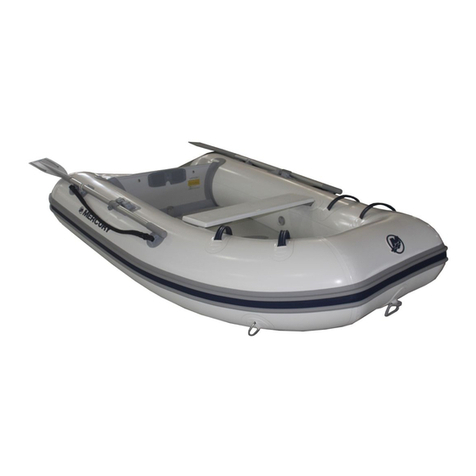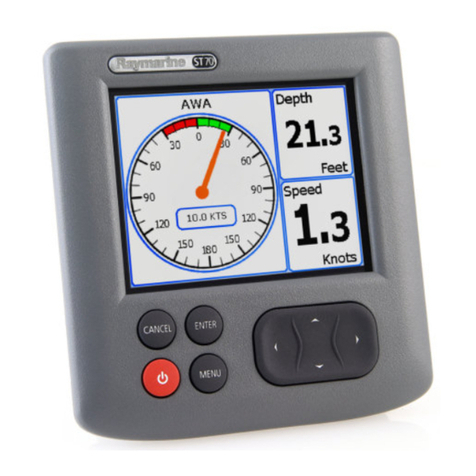
9
INSTRUCTIONS D’ASSEMBLAGE DES BATEAUX à LATTES CFRP
1. Dégagez un espace plat (assurez-vous qu’il est propre et exempt d’objets pointus) pour déplier votre bateau. Retirer le bateau de sa housse.
Dérouler la coque an qu’elle soit à plat.
2. Gonez le bateau avec la pompe à pied haute pression à 90 %. Commencez à goner le bateau par la chambre avec la soupape de sécurité de
surpression.
Remarque: Ne pas utiliser de compresseur d’air. Les dommages causés à votre bateau par le gonage excessif avec un compresseur à air ne
sont pas couverts par la garantie.
3. Installer le banc en en le faisant glisser sur les rails situés sur les otteurs latéraux.
4. Terminer de goner toutes les chambres du bateau à 100 %, ou 0,25 bar de pression. Le tube principal des bateaux est muni d’une soupape de
surpression intégrée pour plus de sécurité.
5. Fixer les rames.
DEGONFLAGE
Retirer les bouchons de vanne. Appuyer sur la tige pour relâcher la pression d’air et la tourner pour verrouiller la vanne en position ouverte. Dégoner
chaque chambre à 50-75% avant de dégoner complètement toutes les chambres.
Remarque: Ne pas dégoner complètement une chambre alors que les autres sont complètement gonées. Cela pourrait endommager les
cloisons de votre bateau.
ENTRETIEN & RANGEMENT
• Laver le bateau au jet d’eau an de retirer toutes les saletés et le sable qui pourraient l’endommager puis bien le laisser sécher.
La plupart des saletés peuvent être enlevées avec un tuyau d’arrosage, une éponge et un savon doux. N’utilisez pas de nettoy-
ants chimiques agressifs.
• N’utilisez jamais de produits de polissage ou de nettoyage contenant de l’alcool pour nettoyer votre bateau. Cela pourrait en-
traîner une dégradation du matériau de la chambre à air.
• Rangez-le toujours dans un endroit propre, sec et tempéré (soit entre 65 et -20°C).
• Si vous stockez votre bateau pendant de longues périodes replié dans son sac, assurez-vous qu’il est parfaitement sec, ne le
recouvrez pas et ne l’enduisez pas de talc ou d’autres poudres du même genre.
• Il peut être rangé goné ou dégoné.
• Si vous le rangez à l’extérieur, il est conseillé de le maintenir surélevé.
• S’il risque d’être exposé au soleil, à la pluie ou à proximité d’arbres, il est vivement conseillé de le recouvrir d’une bâche.
• Il n’est pas recommandé de le suspendre.
• Si vous laissez le bateau dans l’eau, vous devrez probablement évacuer de l’eau de pluie de temps en temps. Si vous le rangez
dans un placard, un sous-sol ou un garage, nous vous conseillons de choisir un endroit frais et sec, en vous assurant que le
bateau reste propre et sec avant de le ranger - il est important d’éviter tout risque de moisissure.
• Ne jamais ranger votre bateau avec du carburant dans le réservoir dans une pièce où les vapeurs de carburant peuvent atteindre
une amme, une étincelle ou une forte source de chaleur.
DÉPANNAGE
1. Fuites
Après 2 ou 3 jours, il peut y avoir une légère baisse de pression due au changement de température. Si c’est le cas, ajoutez quelques pompes d’air
dans chaque chambre. Si vous perdez de la pression d’air et que cela n’est pas dû à des températures plus froides, vériez l’étanchéité du bateau,
en commençant par les valves. Le meilleur outil pour trouver des fuites est de l’eau savonneuse dans un acon pulvérisateur. Nous recommandons
de mélanger du savon et de l’eau dans un acon pulvérisateur. Vaporisez autour de la valve. Si vous voyez des bulles se former, vériez la base de
la valve et assurez-vous que l’insert de la valve est bien vissé. Si vous continuez à avoir des pr
oblèmes, contactez
[email protected] pour
commander de nouvelles vannes. Le remplacement de l’ensemble de la valve peut être effectué à l’aide d’un simple outil fourni avec une valve de
rechange.
2. Trouver des crevaisons
Si le bateau perd de l’air et que toutes les vannes sont étanches, vous avez probablement une petite crevaison. Les petites crevaisons peuvent être
réparées facilement et dénitivement. Vaporisez autour de l’intérieur et de l’extérieur du boudin jusqu’à ce que des bulles d’air marquent la position de
la fuite. Si vous n’arrivez pas à trouver une fuite lente avec des bulles d’air, gonez le bateau à la pression d’air maximale et essayez d’écouter pour
trouver la fuite. Si vous pouvez réduire la zone, revenez avec un acon pulvérisateur pour identier la source de la fuite.
Faire de petites réparations
Les crevaisons de moins de 3 mm / 1/8 “de taille peuvent être réparées simplement sans rustines. Dégonez votre bateau, puis nettoyez et séchez la
zone à réparer.
Appliquez une petite goutte de colle pour recouvrir la crevaison et laissez sécher pendant 12 heures. Si vous devez vous mettre à l’eau plus tôt, laissez
sécher 30 minutes puis gonez le bateau en gonant le compartiment avec la réparation seulement aux 3/4 plein. Cette réparation peut ne pas être
permanente, alors ajoutez une goutte à nouveau à une date ultérieure pour la rendre permanente.
Boatlife Inflatables Instructions.indd 9Boatlife Inflatables Instructions.indd 9 30/08/2022 13:4630/08/2022 13:46

